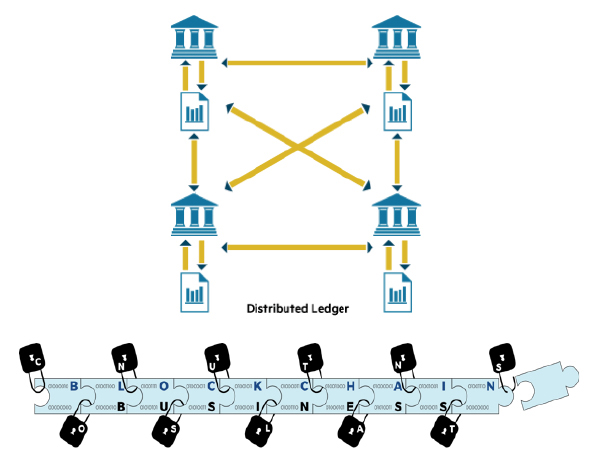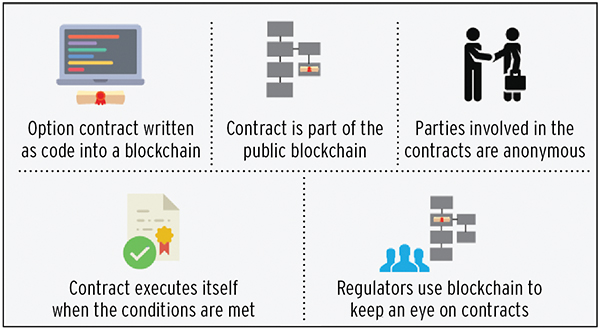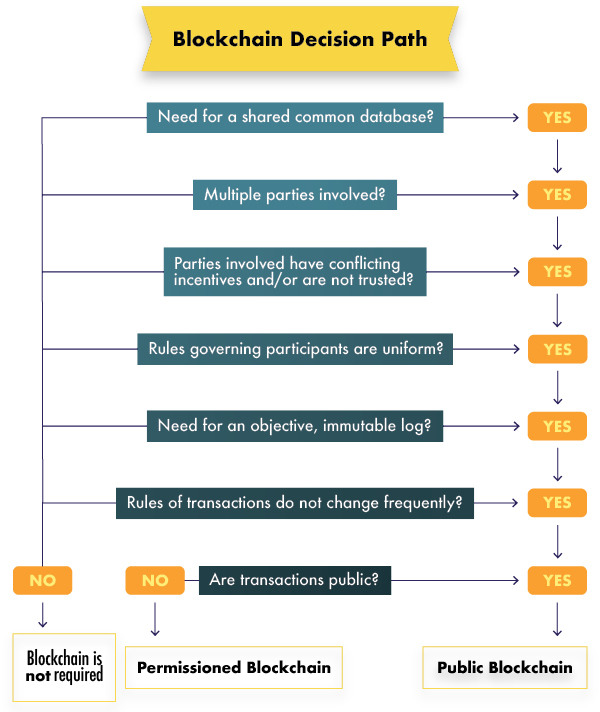A Blockchain Reality Check

Blockchain is the topic of the moment in supply chain. But what can it really do for supply chains today, and where can it take us tomorrow?
Blockchain is “The New Internet,” at least according to Accenture and DHL, in a recently published study on blockchain’s supply chain applications. “Implementing blockchain in logistics could remove the need for intermediaries, while also verifying, recording, and coordinating transactions autonomously,” notes the report. “Blockchain-based supply chains would eliminate an entire layer of complexity from global supply chains.”
Where’s the Beef? Now You’ll Know
No Hype: Five Real Benefits
Many agree, including Jon-Amerin Vorabutra, senior vice president, risk, process and IT at Nova Molecular Technologies and former vice president of innovation at LoadDelivered Logistics. “This technology will enable greater supply chain efficiency than ever before, from conducting payment and audits to tracking inventory and assets,” he asserts.
These grand statements are just a small hum in the buzz surrounding blockchain and its application to supply chain. But what is the reality of adoption rates today? Can blockchain really deliver all the benefits it’s purported to offer? And is it a technology for every size and type of company?
The short answer to these questions: It depends. The longer answer is well worth exploring.
But first, some background.
What is blockchain in supply chain? Simply defined, blockchain is a distributed database that holds records of digital data or events in a way that makes them tamper-resistant. It essentially is a safe, “single version of the truth” about transactions and activities occurring across complex supply chain ecosystems.
While participants in a blockchain may access, inspect, or add to the data, they cannot alter or delete existing data. The original information stays put, leaving a permanent and public information trail of transactions. Depending on the type of blockchain, data-privacy protection can be very robust, as can the capabilities for end-to-end visibility, track and trace, security, and condition monitoring.
“In the end,” says Drew Miller, managing director of Blockchain Business Consultants, “blockchain is a record-keeping mechanism that makes it easier, safer, and simpler for businesses to work together over the internet.” (See Figure 1.)
Figure 1: Blockchain supply chain distributed with single ledger platform
Source: Drew Miller, 2018
Blockchains come in two flavors: private and public.
In a private blockchain, a private entity(ies)—Walmart or Amazon, for example—controls the computers and the blockchain. Admission is by invitation only to trading partners such as suppliers, buyers, transportation companies, and financial institutions. All parties agree to participate by the rules of the private blockchain.
“Private, permissioned blockchain allows businesses to start extracting commercial value from blockchain implementations,” McKinsey & Company writes in a 2018 report entitled Blockchain Beyond the Hype: What is the Strategic Business Value?
“Dominant players can maintain their positions as central authorities or join forces with other industry players to capture and share value,” McKinsey says. “Participants can get the value of securely sharing data while automating control of what is shared, with whom, and when.”
Unlike a private, permissioned blockchain, a public blockchain is completely open. Anyone can join and participate. Bitcoin, the world’s first cryptocurrency (electronic cash), was one of the first public blockchain networks.
Public blockchains carry two significant drawbacks for commercial users. One is the substantial amount of computational power required to maintain a distributed ledger at such a large scale. Two is the lack of privacy and protection of proprietary data. Figure 2 explains the private versus public blockchain architecture and capabilities.
Figure 2: Private vs. public blockchain attributes
SOURCE: McKinsey & Company
Smart Contracts: The Key Enabler
Having a distributed blockchain ledger is fine, but what really makes this technology pay off is imbedded smart contracts. “Smart contracts are every bit as important as blockchain,” says Miller. “You put your contract terms on the blockchain, and the platform executes those terms as it receives confirmation that tasks are completed and meet the contract terms.”
For example, if a truck delivers a shipment, and meets the contractual service-level agreement, the smart contract automatically issues payment. No waiting for payment, no invoicing, no administrative costs. (See Figure 3.)
Figure 3: How smart contracts work
Source: Codebrahma, 2018
How far off is widespread adoption of blockchain in supply chain? Most experts say three to five years. “But that timeline could accelerate if a big and ‘neutral’ company, such as Google or IBM, launches an end-to-end commercial blockchain,” notes Steve Banker, vice president, SCM at ARC Advisory Group. At that point, adoption could escalate quickly.
The key differential in this scenario is that the blockchain “owner” is a neutral party, and not a Walmart, for example, where companies might worry about the security of their proprietary, competitive information.
Another essential for widespread adoption: The blockchain must cover the end-to-end supply chain, not just point-to-point transactions. It needs to cover every single supply chain “touch” to deliver the greatest return on investment and make the change management process worth the effort and cost.
Is Blockchain Right For You?
Blockchain, at its current maturity level, is not right for every type and size of company.
“For big companies, carriers, third party logistics (3PL) providers and shippers, I see immediate value,” says David Broering, president, North American Non Asset at NFI. “International supply chains have all kinds of moving parts, and many players—carriers, ports, manufacturers, suppliers, financial institutions, government regulators, and customs. So, having secure and shared control of these moving parts makes total sense.”
Blockchain also makes sense for cold chain, high-value, and/or heavily regulated industries such as food and pharmaceuticals, Broering says.
From a trucking perspective, however, Broering says investing in blockchain is not a viable strategy at the moment. He cites several reasons:
- The average length of haul is short—just 700 miles—a simple point-to-point transaction.
- The hand-offs to trading partners are limited in number—shipper-receiver.
- Trucking companies typically don’t have profit margins that allow investment in always-on connectivity or big data systems, including blockchain.
To make an informed decision on whether or not to implement blockchain, Miller recommends using a decision matrix (Figure 4). Rather than just answering yes or no to the questions, he suggests weighting the answers on a scale of 1 to 10, where 1 is “not important” and 10 is “critical.” Then tally the score to see where the answer falls on your decision scale.
Figure 4: Making an informed decision on implementing blockchain
Evolution, Not Revolution
Blockchain is a technology platform that’s here to stay and holds great potential for the supply chain environment.
That said, broad adoption remains years away. Early adopters will be those companies and sectors that have the most at stake—high value (diamonds), high risk (defense technology), high compliance requirements (fresh food and temperature controlled), and high service performance requirements (3PLs that service these at-stake customers).
Return on investment is an issue. Adopting blockchain means restructuring how supply chains operate. Therefore, change management—internal and external—is a major undertaking and carries a significant cost.
Balancing the cost of change against the return on efficiencies, speed and agility, risk reduction, and ultimately profitability is something every company will have to regularly assess as the technology rapidly evolves.
Where’s the Beef? Now You’ll Know
While many industries are still considering blockchain for supply chain, one beef company is ready to give it a meaty role. Georgia agribusiness enterprise Kelly Products started using a blockchain system for tracking beef and other proteins through Farmview Market, which it started in 2015, before making it available to producers across the Southeast.
“Utilizing blockchain technology for our new tracking system gives producers the opportunity to streamline their protein tracking and make it accessible and transparent,” says Stuart Edmondson, chief technology officer of Kelly Registration Systems, the software division of Kelly Products.
Participating producers will track their cattle and livestock through RFID and collect the data at predefined intervals. Since the solution is built on blockchain technology, the data will be easily accessible to the producers’ partners, retailers, and consumers.
No Hype: Five Real Benefits
Blockchain unquestionably will generate benefits for those users with large, multi-national businesses. Steve Banker of ARC sums up these expected benefits. Supply chain blockchain:
- Creates a single, immutable version of the truth about what’s happening in the supply chain—where, how, why, with whom, and in what condition (physical, contractual/regulatory compliance).
- Drives significant improvements in operational efficiencies via smart contracts, thereby eliminating or reducing the need for middlemen and their costs, as well as reducing internal administrative procedures such as invoicing and error resolution.
- Creates a more secure physical and cyber supply chain by locking down information and maintaining a complete chain of custody record for all goods movements.
- Fosters greater supply chain resiliency by eliminating single points of failure. If one node goes down, the blockchain keeps running.
- Can capture Internet of Things (IoT) and sensor inputs for condition monitoring, track and trace, and serialization, thereby increasing product safety and security.




